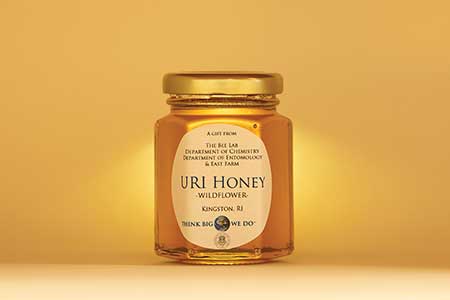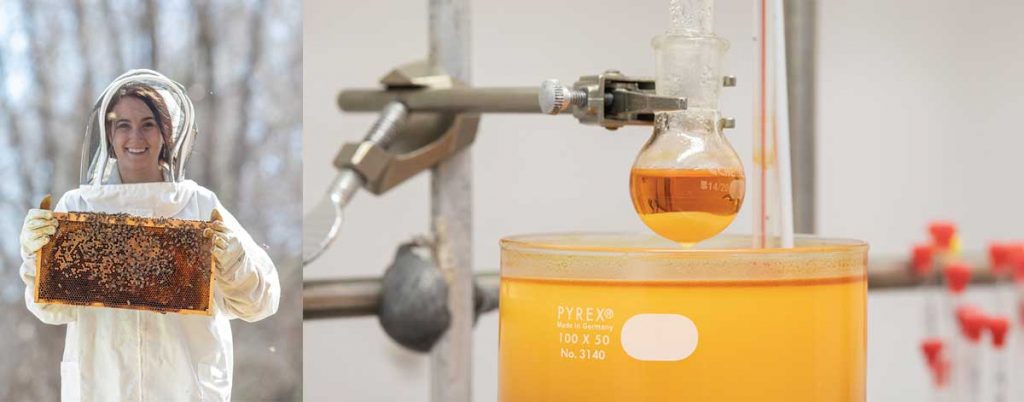
Bees play a vital ecological and economic role. In addition to providing honey, they pollinate fruit and vegetable crops which is vital to maintaining our food supply. Honeybees are designed to collect particulates from the environment. Their branched hairs on their bodies are perfectly suited to collect nectar and pollen from flowering plants. Honeybees covered in pollen will groom themselves and compress collected pollen along with any debris into pollen packs on their hind legs to carry back to the nest. The tendency of honeybees to collect non-pollen debris particulates from the environment was vital to the unraveling of honey bee language in post-World War II Germany. Lindauer first observed dancing honeybees coated in flour, brick dust and soot reporting potential hive locations to a collected swarm in a grain mill, collapsed building and chimney, respectively.
The URI research team used the same basic ability of honeybees to gather non-pollen particulates to detect microplasticin the environment. URI entomology Professor Steven Alm and URI Associate Professor of Chemistry, Matthew Kiesewetter, are exploring a novel approach to tracking microplastic emissions that starts at URI’s East Farm’s Bumblebee Garden and hopes to leverage a world-wide network of honeybees.
The sources of microplastics are ultimately terrestrial and have been detected in wind/air currents and distributed overlarge surface areas. The challenge of detecting microplastics terrestrial distribution can be supported by the assistance of the honeybees populations. Honeybees forage from 2-5 miles from their hives, sampling an area of 12-75 square miles.There are approximately 2.5 million managed and well distributed honey bee colonies in the US. The collection of a single beehive coupled to an existing worldwide network of managed colonies is a ready-made tool for tracking microplastic emissions.
To support URI’s Bumblebee Garden and its plastics research, please donate today.


